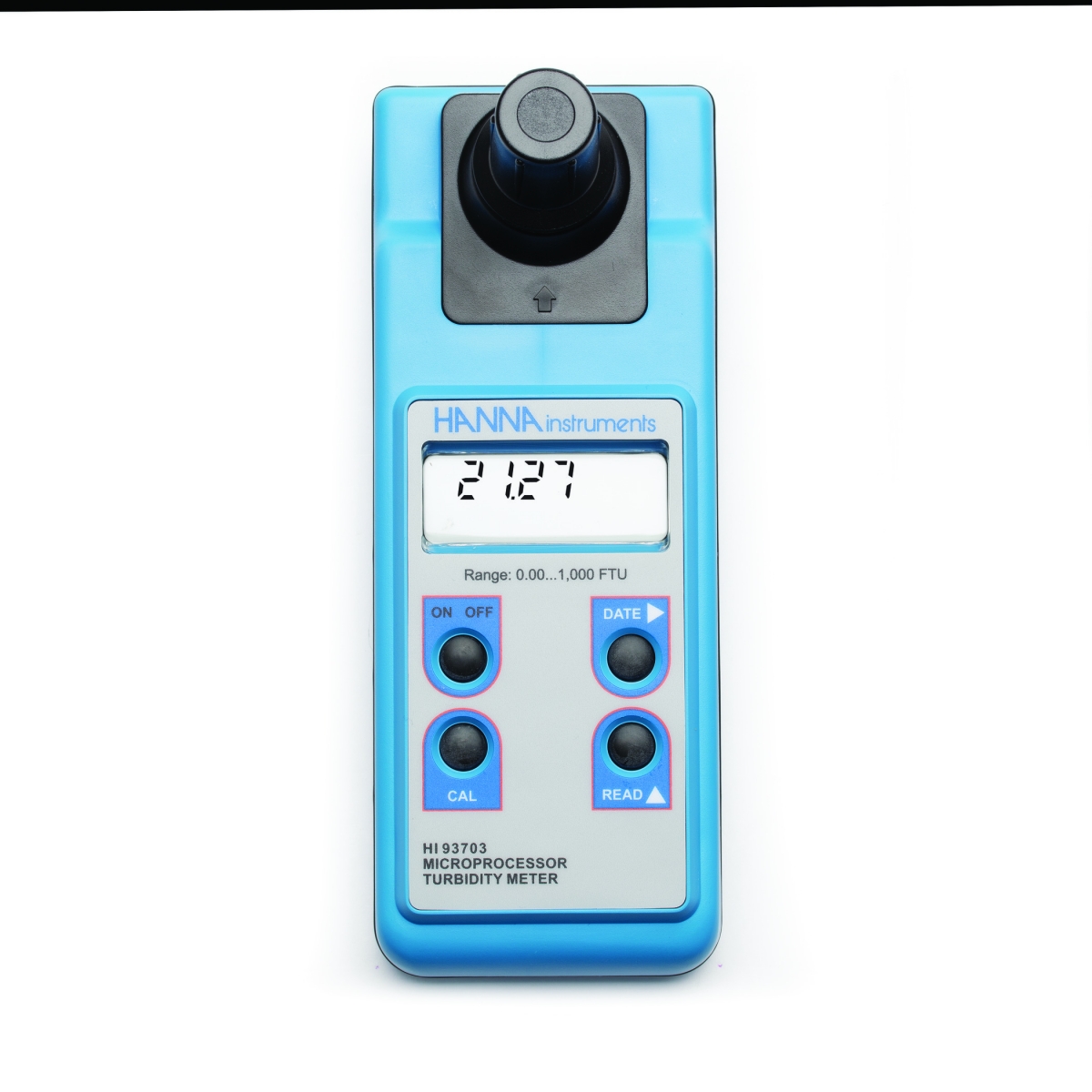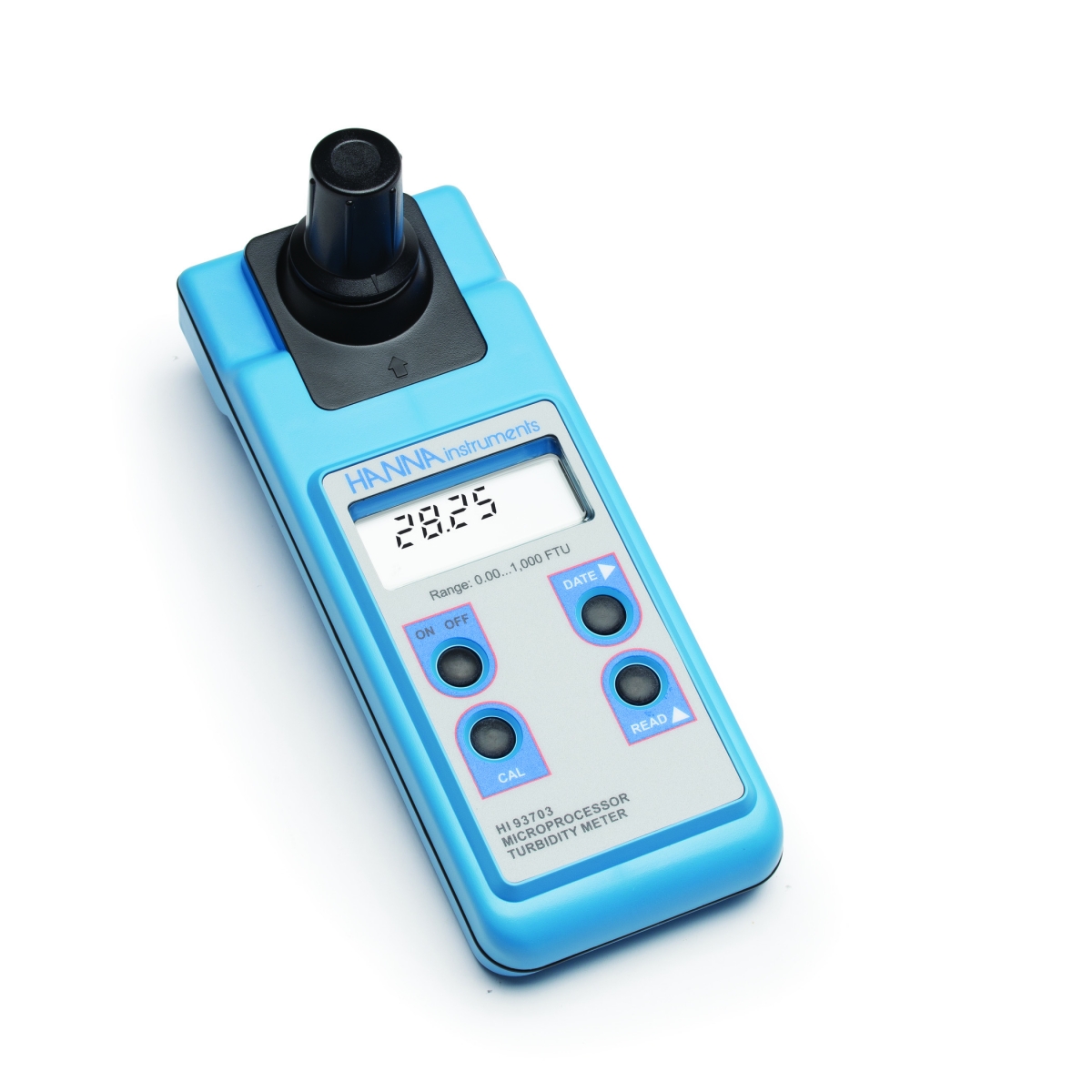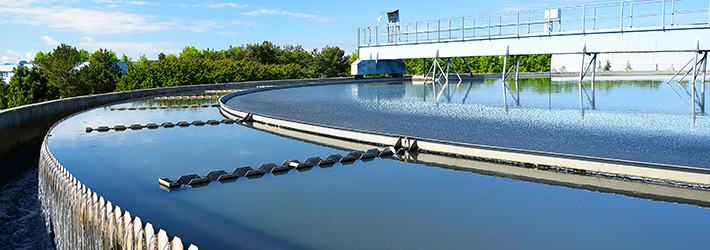Force and mechanical measuring equipment
– Determine the turbidity of clean water from 0.00 to 1000 FTU
– Automatic calibration at 3 points (Standard solution purchased separately)
– High accuracy
– Meets ISO 7027 standard for turbidity measurement.
– Automatic data recording
– Computer connection
– Convenient handheld meter suitable for on-site measurement.

The HI93703 uses a 90° light detector to detect scattered light. Turbidity measurements can be made in the range of 0.00 to 1000 FTU.
ISO COMPLIANCE
HI93703 meets the requirements of the method. ISO 7027 for measuring turbidity using an infrared LED light source. When the meter has been designed according to this ISO method, the unit will be displayed in FTU (Formazine Turbidity Unit); FTU = NTU (nephelometric Turbidity Unit).
Special 25 mm round glass cuvettes ensure repeatability of turbidity measurements
REAL TIME CLOCK INTEGRATION
Save recorded data at the same time as GLP data
AUTOMATIC DATA RECORDING
Up to 199 measurements
DATA TRANSMISSION VIA COMPUTER
By HI92000 software

HI93703 2 or 3 point turbidity calibration at 0, 10, and 500 FTU (standard solutions purchased separately)
LAST CALIBRATION DATE
The HI93703 allows the user to store the last calibration date. Recalling the last calibration date is simple with a “DATE” .
LOW BATTERY ALERT
When the line “LO BAT” appears in the lower right corner of the display, meaning that new batteries are needed. At this point, the meter can still perform approximately 50 measurements. When the battery is too low to perform reliable measurements, a message appears and the meter turns off automatically.
WHAT IS TURBIDITY IN CLEAN WATER?

Turbidity is one of the most important parameters used to determine the quality of drinking water. While turbidity is considered an aesthetic factor in drinking water, turbidity control is a safeguard against pathogens. In natural waters, turbidity measurements are used to assess the general quality of water and its suitability for applications involving aquatic organisms. Wastewater monitoring and treatment were once entirely based on turbidity control. Today, turbidity measurements are often required at the end of the wastewater treatment process to verify that values are within regulatory standards.
Turbidity of water is an optical property that causes light to be scattered and absorbed, rather than transmitted. The scattering of light passing through a liquid is primarily caused by the suspended solids present. The higher the turbidity, the greater the amount of scattered light. Even a pure liquid will scatter light to some extent, meaning that no solution has zero turbidity.
The ISO standard for measuring turbidity uses infrared wavelengths of light outside the visible spectrum. The main advantage of the ISO method over the EPA method is the reduction of color interference. The EPA method uses a tungsten lamp that produces light containing all visible wavelengths of light that we see as white. A colored solution will be absorbed by the additional wavelengths of light which will affect the turbidity value. Since the ISO standard method is outside the visible wavelengths the colored light in the sample does not interfere with the measurement. The USEPA generally uses tungsten lamps because they provide better accuracy at low ranges and colorless drinking water. The requirements for an optical turbidimeter for measuring diffuse radiation used in low range measurements (i.e. drinking water) are expressed in formazin units. nephelometric (FNU) according to ISO 7027:1999 standard is:
Measurement of diffuse radiation in low turbidity water (0 FNU to 40 FNU):
– The wavelength of the incident light will be 860 nm.
– The spectral bandwidth of the incident radiation must be less than or equal to 60 nm.
– There shall be no parallel divergence of the incident radiations and any convergence shall not exceed 1.5o.
– The angle, theta, between the optical axis of the incident radiation and that of the diffuse radiation is 90o ± 2.5o.
– Aperture should be between 20o and 30o in water sample.
HI93703 meets and exceeds ISO 7027 standards
SPECIFICATIONS
|
The scale |
0.00 to 50.00 FTU 50 to 1000 FTU |
|
Resolution |
0.01 (0.00 to 50.00 FTU) 1 (50 to 1000 FTU) |
|
Accuracy |
±0.5 FTU or ±5% measured value (take the larger value) |
|
Calibration |
3 points at 0 FTU, 10 FTU and 500 FTU (standard solution purchased separately) |
|
Light source |
silicon photocell |
|
Lamp |
LED |
|
The battery |
4 x 1.5V |
|
Environment |
0 to 50°C (32 to 122°F); RH max 95% (non-condensing) |
|
Size |
220 x 82 x 66 mm |
|
Mass |
510 g |
|
Guarantee |
12 months (for products with original stamps and warranty cards intact) |
|
SUPPLY INCLUDED |
– HI93703-11 meter – 2 cuvettes with lids – The battery – Warranty card (no warranty without warranty card) – User manual – Paper container Calibration solution purchased separately |
|
Accessories purchased separately |
HI731321: Glass cuvettes, 4 pcs. HI731325: Plastic cuvette caps, 4 pcs. HI93703-0: Standard solution at 0 FTU, 30mL HI93703-10: Standard solution at 10 FTU, 30mL HI93703-05: Standard solution at 500 FTU, 30mL HI93703-05: Cuvette cleaning solution, 230mL HI731318: Cuvette wiping cloth, 4 pcs. |